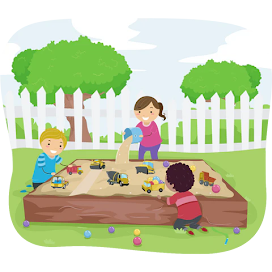Full, Half & Empty - how to teach this concept easily to children
Full, Half & Empty
Full:
When a container is completely filled with something (like water, blocks, or toys), it is FULL.
Half:
When a container is filled halfway (not completely full, but not empty either), it is HALF FULL.
Empty:
When a container has nothing inside, it is EMPTY.
Story of full, half, and empty:-
The Story of Benny's Juice Cup
Benny had a big cup of juice. The cup was FULL of juice, all the way to the top!
Benny drank some of the juice, and now the cup was HALF full.
Benny drank some more, and soon the cup was EMPTY!
Benny's mom asked him, "Benny, is your cup full, half full, or empty?"
Benny replied, "My cup is empty, Mom!"
Discussion Questions:
1. What was Benny's cup like at first?
2. What happened to Benny's cup after he drank some juice?
3. What was Benny's cup like at the end?
Activity Ideas:
1. Water Play:
Fill a container with water and ask students to describe its state (full, half, or empty). Then, have them pour water into another container to demonstrate the different states.
2. Block Building:
Use blocks or Legos to demonstrate the concept. Build a tower, then remove some blocks to show half full, and finally, remove all blocks to show empty.
3. Sensory Bin:
Fill a sensory bin with rice, beans, or sand and hide small toys or other objects. Ask students to search for the objects and describe the bin's state (full, half, or empty).
4. Picture Sorting:
Prepare pictures of different containers (e.g., cups, bottles, or buckets) in various states (full, half, or empty). Ask students to sort the pictures into categories.






.jpg)



.jpg)
.png)
Comments
Post a Comment